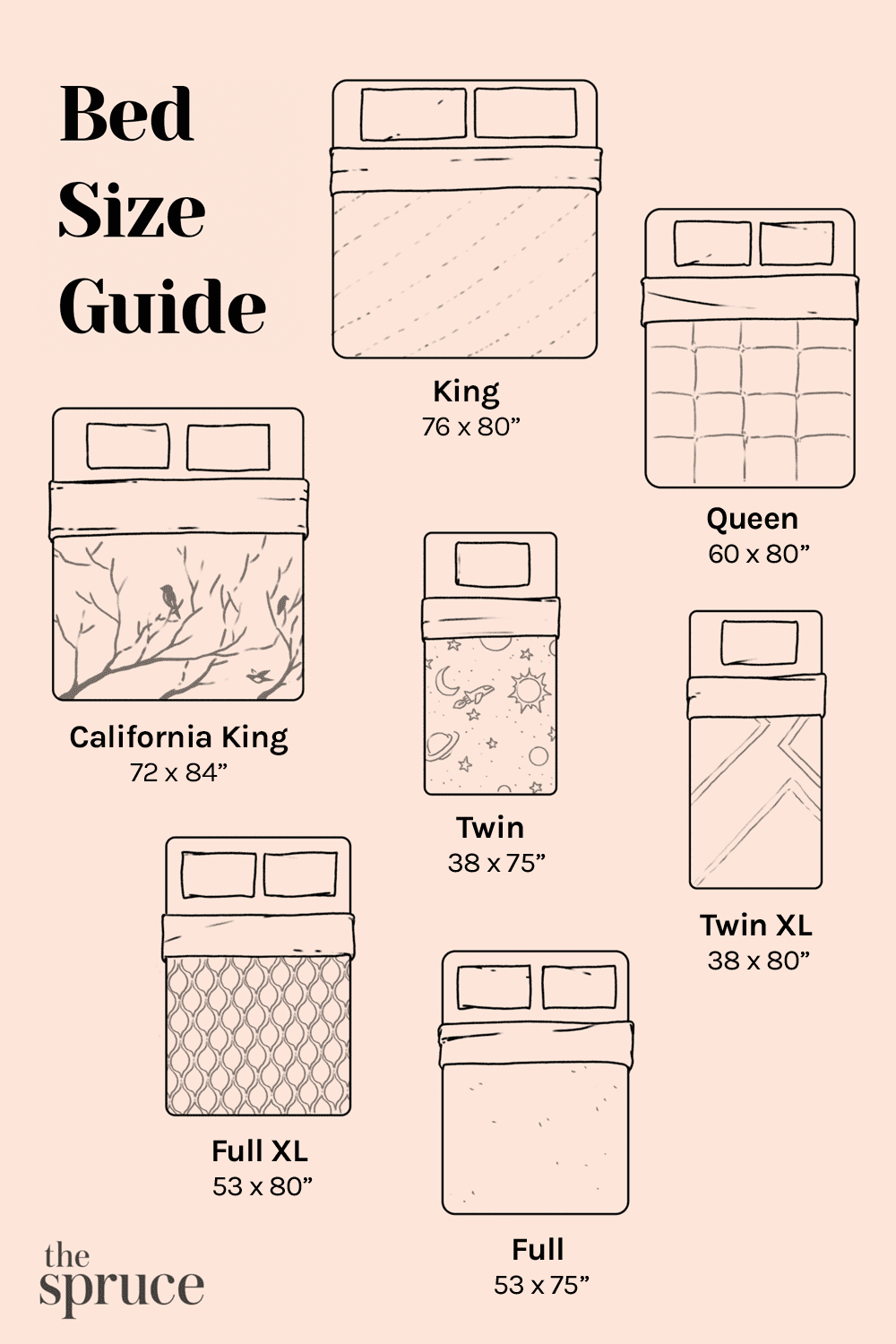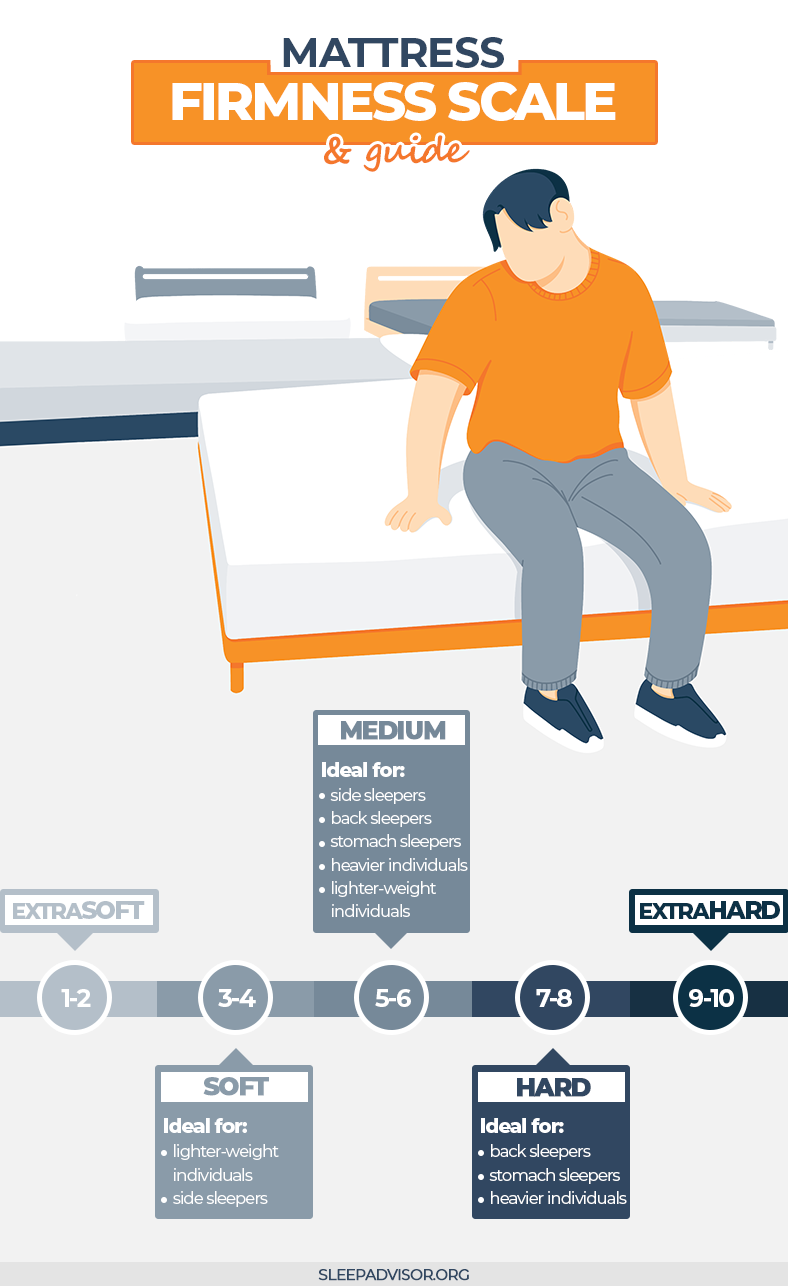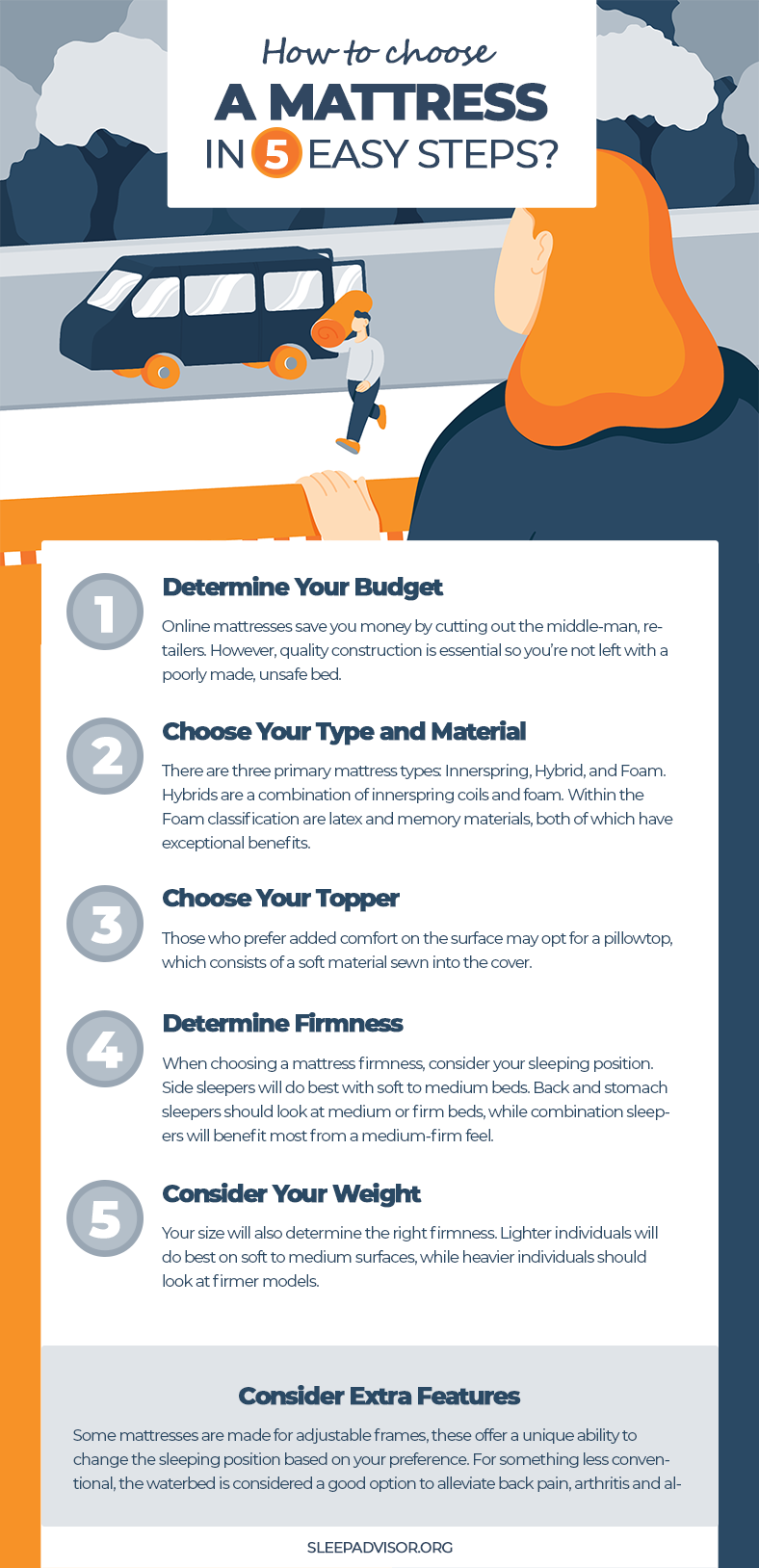Are you in the market for a new mattress and wondering how to test a mattress to make sure it is the perfect bed for you? This article will provide you with a step-by-step guide on how to test a mattress before making a purchase. We’ll discuss the most important aspects of mattress testing, including comfort, support, and durability. With our guide, you’ll be able to confidently choose the right mattress for your needs.
What to Consider Before Buying a Mattress

Sleep Position
If you’re a side sleeper, you’ll need a mattress that provides pressure relief to your hips and shoulders. Stomach sleepers need a mattress that offers extra support, while back sleepers need a balance of support and pressure relief.
Body Weight & Size
Your body weight and size will determine how deep you sink into the mattress. A person that is heavier than average will need a firmer mattress to keep their spine aligned. Lighter people, on the other hand, will require a softer mattress that can still provide adequate support.
Comfort Preference
Your comfort preference will determine how soft or firm you want your mattress to be. People who prefer a softer feel may opt for a hybrid or foam mattress, while those who prefer a firmer feel may choose an innerspring mattress.
Mattress Type & Construction
There are a variety of mattress types and construction materials, each with its own benefits. Foam mattresses offer excellent pressure relief, while innersprings provide great support. Hybrids are a combination of both.
Firmness & Support
The firmness of a mattress plays a key role in how well you sleep. A mattress that is too soft will not provide enough support, while a mattress that is too firm can cause pressure points. The best way to determine the right firmness for you is to test the mattress in-store or at home to see how it feels.
How to Test a Mattress

Lie Down on the Mattress
When testing a mattress, the best way to start is to lie down on it. Make sure to try it in the positions you usually sleep in. Spend around 10 minutes in each position to get a good feel for the mattress. Make sure to pay attention to how the mattress contours to your body and if it supports your spine in a neutral alignment.
Pay Attention to Pressure Points
Pay attention to any pressure points that may occur when lying on the mattress. If you feel like a particular part of your body is sinking too deep into the mattress, it’s likely not the right one for you. The mattress should not cause discomfort in areas such as your hips or shoulders.
Consider the Motion Transfer
If you share your bed with a partner, it’s important to take into consideration the motion transfer of the mattress. The motion transfer measures how much motion is transferred across the mattress when one partner moves. A mattress with good motion transfer will minimize the motion that is felt by the other partner.
Check the Edge Support
Edge support is important to consider when testing a mattress. It measures the stability and support of the mattress’ edges. Poor edge support can lead to an uneven sleeping surface and can cause you to feel like you are slipping off the bed.
Check the Durability
Lastly, check the durability of the mattress. Look for quality materials such as high-density foams and strong coils. Quality materials will ensure that the mattress lasts for years to come.
Other Factors to Consider

Price & Budget
Price should always be a factor when it comes to purchasing a mattress. You want to make sure you get the best value for your money and that you don’t overspend. Be sure to shop around and compare prices to ensure you get the best deal.
Mattress Size & Design
The size and design of your mattress also plays an important role in selecting the right one. Consider the size of the room you plan to place the mattress in, as well as the size of the bed frame. Also, think about the type of design that best suits your needs and preferences.
Warranty & Sleep Trial Period
Before making your decision, be sure to check the warranty and sleep trial period offered by the manufacturer. Most companies offer a limited warranty and a sleep trial period, which will give you a chance to test the mattress and make sure it fits your comfort needs.
Mattress Care & Maintenance
It’s also important to think about how to care for and maintain your mattress. Be sure to read the manufacturer’s instructions carefully and follow all cleaning and maintenance guidelines. This will help you keep your mattress in good condition for years to come.
Conclusion
Testing a mattress is essential to ensure you have the perfect bed for your needs. When testing a mattress, it is important to consider factors such as firmness, support and comfort. Also, it is beneficial to try out different sleeping positions and test the mattress using the guidelines discussed in this article. Finally, it is critical to make sure the mattress is the right size for your bed. With these steps, you can be sure you are making the right choice when it comes to selecting a mattress.
Frequently Asked Questions
How Long Do I Need to Test the Mattress Before Making a Decision?
- Lie Down and Feel the Comfort Level: Most mattress retailers let you lie down on different mattresses to see how comfortable it feels for you. Take your time to get the feel of the mattress and how it supports your body.
- Move Around and Test Out the Motion Transfer: Roll around on the mattress or move from side to side. If you’re sharing the bed with a partner, you should test out the motion transfer, meaning how much your movements will disturb them.
- Check the Edge Support: Some mattresses have better edge support than others. If you’re a side sleeper, you’ll want to make sure the edges don’t sink down too much when you lay on them.
- Test Out the Mattress Return Policy: Most mattress companies offer a trial period and some kind of return policy. Make sure you understand their return policy before you make a purchase.
- Give It Time: To get the best feel for the mattress, give it at least a month before making a decision. This will give you time to adjust to the new bed and make sure it’s the right fit for you.
What Are the Benefits of Testing a Mattress in Person Versus Online?
- Try Before You Buy: Testing a mattress in person allows you to get a true feel for the mattress, allowing you to make an informed decision before you make a purchase.
- Touch and Feel: Mattress shopping online doesn’t provide you with the same opportunity to get a true feel for the mattress; testing it in person allows you to physically feel the mattress and determine whether it’s the right fit for you.
- Testing Comfort Level: Testing a mattress in person allows you to determine the comfort level of the mattress and ensure it meets your needs.
- Assessment of Motion Transfer: Testing a mattress in person also allows you to assess the motion transfer of the mattress, which can be helpful if you are sharing the bed with a partner.
- No Shipping Fees: Testing a mattress in person eliminates the need to pay for shipping, which can be expensive depending on the size and weight of the mattress.
- Full Satisfaction: Testing a mattress in person gives you the peace of mind of knowing that you’ve chosen the right mattress for you, allowing you to have full satisfaction with your purchase.
What Types of Mattresses Should I Test?
When testing mattresses, it’s important to evaluate different types to find the right fit for you. Consider testing innerspring, memory foam, hybrid, latex, and airbed mattresses. Each type is designed differently and offers its own unique benefits, so it’s important to test them all to find the mattress that best suits your sleep needs.
Can I Test a Mattress in a Store Even if I Plan to Purchase it Online?
- Yes! It’s important to test a mattress in-store before making a purchase, even if you plan to purchase it online.
- You should lay down on the mattress for at least 10 minutes to get a good feel for the comfort and support it provides.
- Make sure to note any areas of discomfort that may occur while lying down. This will help you determine if the mattress is right for you.
- Additionally, try out different positions and mattress types to compare and contrast the different options.
- Pay close attention to the support provided and how it affects your body. Different mattress types offer different levels of support.
- Once you have tested the mattress in-store, you can then make an informed decision when purchasing the mattress online.
Are there any special tips I should be aware of when testing a mattress?
- Lie Down: Lie down on the mattress and spend at least 15 minutes in different sleeping positions. This will help you determine if the mattress is comfortable for you.
- Listen to Your Body: Pay attention to how your body feels on the mattress. Do you feel any pressure points? Are you able to relax? Make sure the mattress is supportive of your body’s curves and contours.
- Test the Edge: Edge support is important, as it will determine how much usable surface area you have while sleeping. Push on the edge of the mattress to test its support.
- Check the Motion Transfer: If you’re sharing the bed with a partner, you’ll want to test the mattress’s motion transfer. Have one person move around on the bed and see how much movement is felt by the other person.
- Consider Temperature Regulation: Look for mattresses with advanced temperature regulation features, such as cooling gel layers or breathable fabrics, to ensure you stay comfortable throughout the night.
- Be Mindful of Your Sleep Position: Your sleep position can affect your mattress choice. Side sleepers may need a softer mattress, while back sleepers will want to look for a mattress with more support.
Conclusion
When testing a mattress, look for comfort, support, and durability. Don’t forget to consider the size and firmness of your mattress as well as the type of mattress that best suits your needs. Take your time to test out a mattress and make sure it feels comfortable and supportive before making your purchase.






